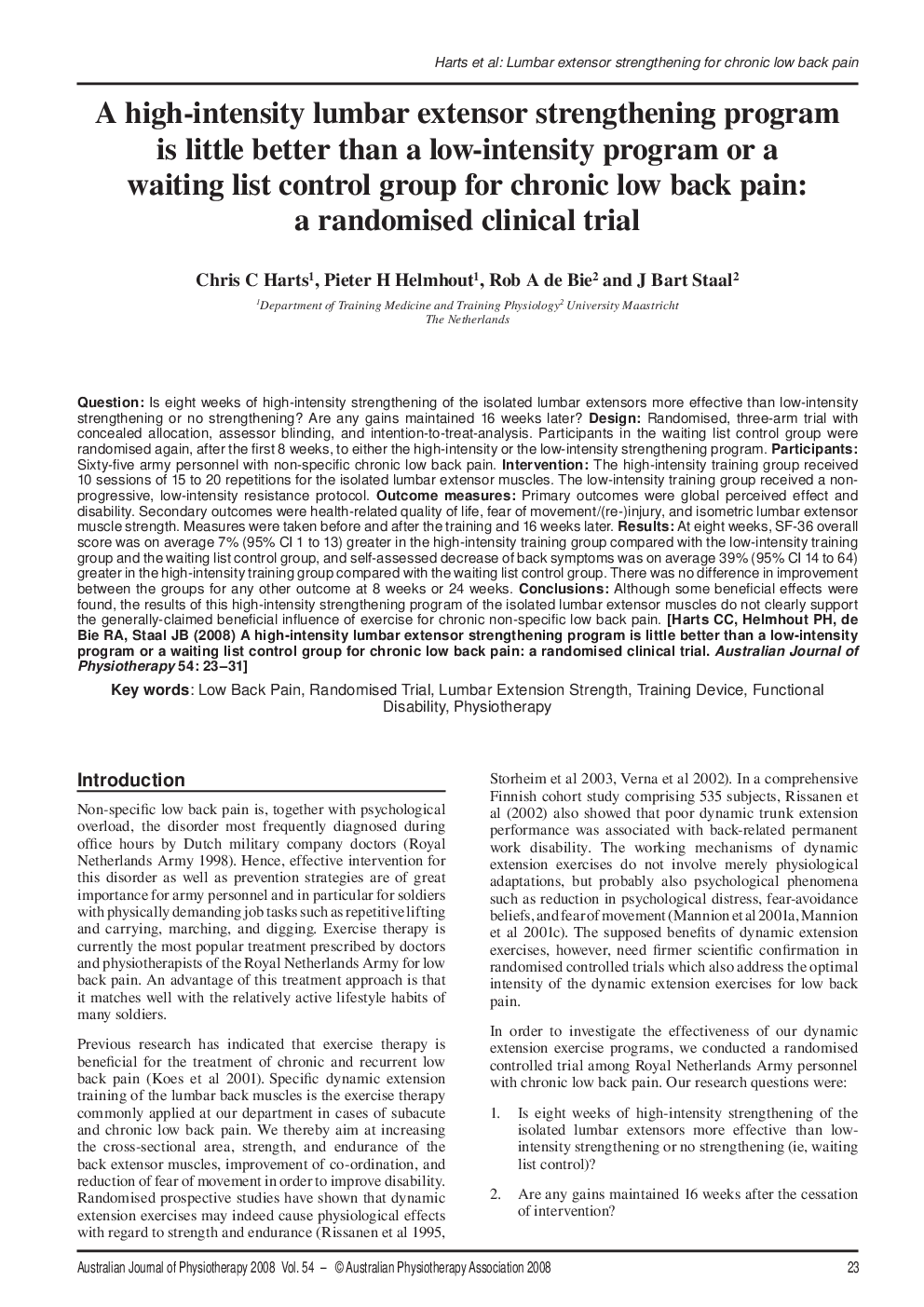| کد مقاله | کد نشریه | سال انتشار | مقاله انگلیسی | نسخه تمام متن |
|---|---|---|---|---|
| 2698633 | 1565263 | 2008 | 9 صفحه PDF | دانلود رایگان |

QuestionIs eight weeks of high-intensity strengthening of the isolated lumbar extensors more effective than low-intensity strengthening or no strengthening? Are any gains maintained 16 weeks later?DesignRandomised, three-arm trial with concealed allocation, assessor blinding, and intention-to-treat-analysis. Participants in the waiting list control group were randomised again, after the first 8 weeks, to either the high-intensity or the low-intensity strengthening program.ParticipantsSixty-five army personnel with non-specific chronic low back pain.InterventionThe high-intensity training group received 10 sessions of 15 to 20 repetitions for the isolated lumbar extensor muscles. The low-intensity training group received a nonprogressive, low-intensity resistance protocol.Outcome measuresPrimary outcomes were global perceived effect and disability. Secondary outcomes were health-related quality of life, fear of movement/(re-)injury, and isometric lumbar extensor muscle strength. Measures were taken before and after the training and 16 weeks later.ResultsAt eight weeks, SF-36 overall score was on average 7% (95% CI 1 to 13) greater in the high-intensity training group compared with the low-intensity training group and the waiting list control group, and self-assessed decrease of back symptoms was on average 39% (95% CI 14 to 64) greater in the high-intensity training group compared with the waiting list control group. There was no difference in improvement between the groups for any other outcome at 8 weeks or 24 weeks.ConclusionsAlthough some beneficial effects were found, the results of this high-intensity strengthening program of the isolated lumbar extensor muscles do not clearly support the generally-claimed beneficial influence of exercise for chronic non-specific low back pain.
Journal: Australian Journal of Physiotherapy - Volume 54, Issue 1, 2008, Pages 23–31